Affiliate links on Android Authority may earn us a commission. Learn more.
(Update: fingerprint update) Sony Xperia Z5 impressions: design, performance & stability
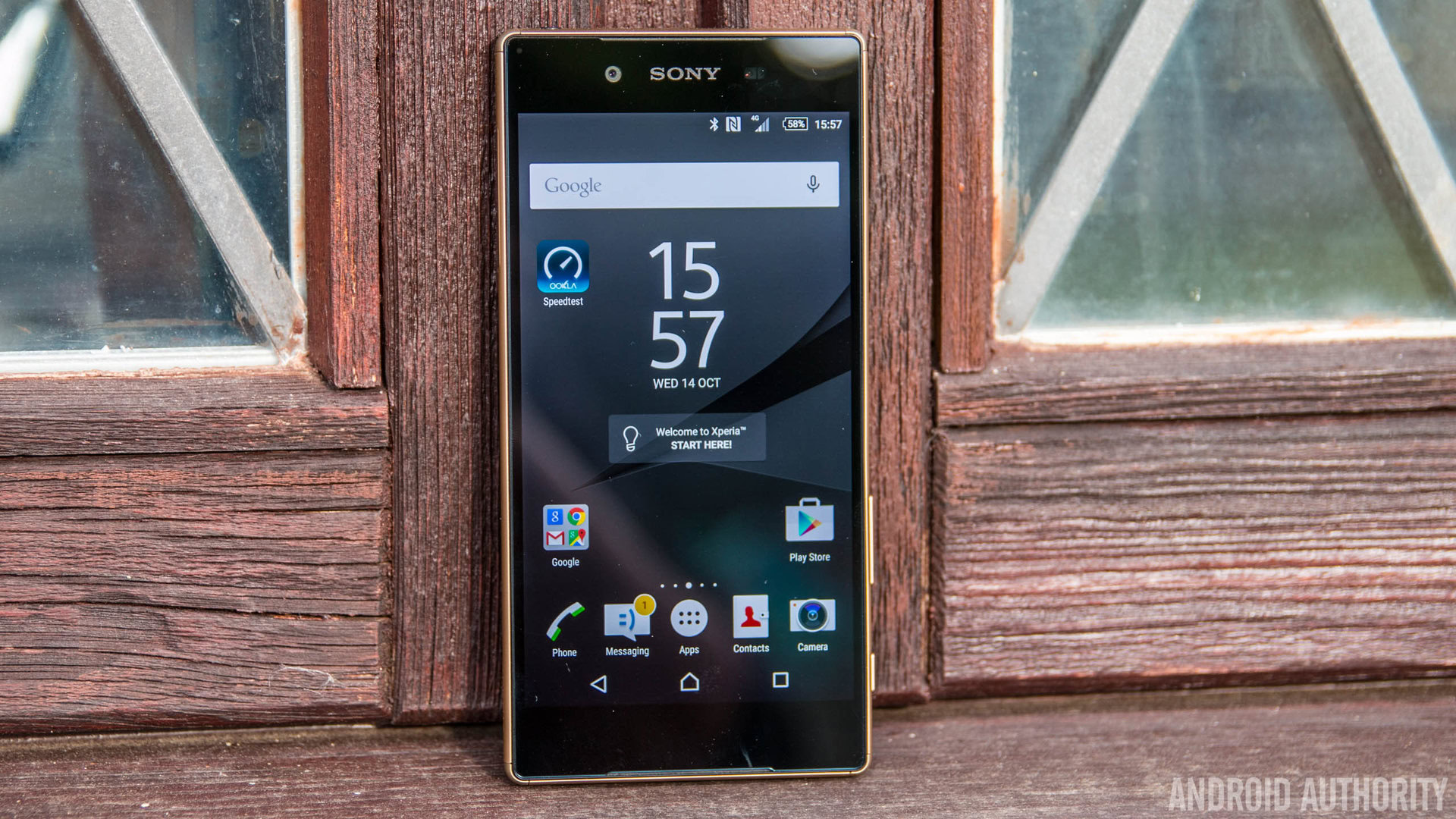
Update: Below we mention that the fingerprint sensor seems to be erratic, however a hard reset and re-registration of the fingerprints has vastly improved the performance. Now, the sensor works flawlessly with only a very slight delay in the actual unlocking of the handset. As such, my impression of the handset has improved and the handset is more impressive than I originally thought. Original post below.
Original Post: Another year and another Sony Xperia handset, which to be completely honest, looks just like past Xperia devices. Yet, with plenty of struggles in its mobile division, Sony is looking to the Xperia Z5 – along with the Xperia Z5 Compact and the world’s first 4K smartphone, the Xperia Z5 Premium – to improve its fortunes.
With the Compact and Premium featuring almost identical specs (with regards to the processor, internals and the camera) to the Xperia Z5, do Sony’s latest handsets deliver? Will the Snapdragon 810 and its perceived overheating problems rear up again or have Qualcomm finally sorted out an issue that’s plagued most Snapdragon 810 devices? Let’s take a closer look.
Design
Since the launch of the Xperia Z1 just over two years ago, Sony’s smartphones have followed a particular design and the Xperia Z5 is no different, bringing with it the same rectangular design that has become synonymous with the Xperia range.
If you’ve used a previous Xperia smartphone, you’ll definitely find the Xperia Z5 comfortable to use but for me personally, the design is beginning to feel a little dated. There’s nothing particularly wrong with the handset design but in an era where companies are innovating with the design of their smartphones, the Xperia Z5 does feel like it belongs to an era past.
One of the biggest issues with the Xperia Z5 is the location of the keys on the right, as they feel a little cramped in actual use. As I covered in our live unboxing of the Xperia Z5, the switch to a fingerprint sensor in the power button (more on that below) and the position of this means the volume keys are quite low on the handset.
As someone with large hands, using the volume keys when the phone is in my hand is near impossible unless I grip the handset at the very bottom (which increases the risk of it slipping and becoming damaged). I’m sure I’ll eventually get used to the positioning but my hand does feel cramped when using it – as I’ve got large hands, this is more a personal finding and it’s quite likely that you’ll find it a lot easier to use.
Moving to the other side and Sony has (again) opted to combine its SIM and microSD card trays into one tray located under a flap, which feels like it’s destined to break. Taking the tray out is difficult unless you have a nail with which to grip it and it feels as flimsy as it did on the Xperia Z3+. Putting the tray back into the handset also proves to be a challenge as, on more than one occasion, the SIM card fell out while trying to insert the card tray. The tray is much better than early Sony handsets and you probably won’t access it that often but it’s worth keeping in mind.
Aside from these gripes, the Xperia Z5 is quite comfortable to hold in the hand and the keys themselves provide ample tactile feedback. The display is an IPS panel with Full HD resolution and is much better than previous displays used in Sony handsets. The display offers vibrant colours and while it’s not QHD resolution like other flagships, it is a very good display (although sunlight legibility is somewhat questionable). On the front, there is a front speaker which is much louder on previous devices, which is again a welcome improvement.
The front and the back of the Xperia Z5 are protected by Gorilla Glass, with the back a frosted glass panel that looks quite intriguing while the metal around the sides (with plastic corners) is plain and somewhat boring. Sony’s design definitely works and the company has stuck with a tried and tested design but it does feel like it’s lost the same appeal that made it stand out in the first Xperia Z smartphone.
That being said, the Xperia Z5 design definitely stands out and especially in this rich gold colour, it’s different to other devices on the market. Sony’s choice of glass and metal is nice in the hand and while I’d have liked to have seen Sony push its design boundaries a little more than it has done, the Xperia Z5 definitely looks and feels premium.
Performance
Under the hood, the Xperia Z5 is powered by an octa-core Snapdragon 810 processor coupled with an Adreno 430 GPU, 3GB RAM and 32GB internal storage. Compared to other flagship Android smartphones, the specifications are certainly up there with the best (although some handsets do offer 4GB RAM) but does the performance live up to this?
In actual day-to-day usage, the Xperia Z5 is definitely snappy and even installing a lot of data (or recording an hour’s worth of 4K video) doesn’t have an effect on the handset’s performance. When switching between applications, there doesn’t seem to be a delay and for the most part, the processor and RAM combination certainly seems to work.
There is one area that the Xperia Z5 is a let down; the fingerprint sensor. The first Xperia to come with a sensor built in, the Z5’s power button houses the sensor and the position of this, where your thumb would naturally sit. is meant to make it quick and easy to use. The problem; you need to be quite precise with your thumb placement.
When you’re precise, it works pretty quick and is on par with most flagships (albeit not as fast as the fingerprint sensor on the HUAWEI Mate S). However, more often than not, you’ll find you have to lift your thumb and place it again and it can be quite frustrating when it doesn’t unlock. That being said, like all fingerprint sensors, the reliability is related to the preciseness of the original fingerprint you save so this may be related to my unit or the initial fingerprint saved so we’ll test this fully in the upcoming review.
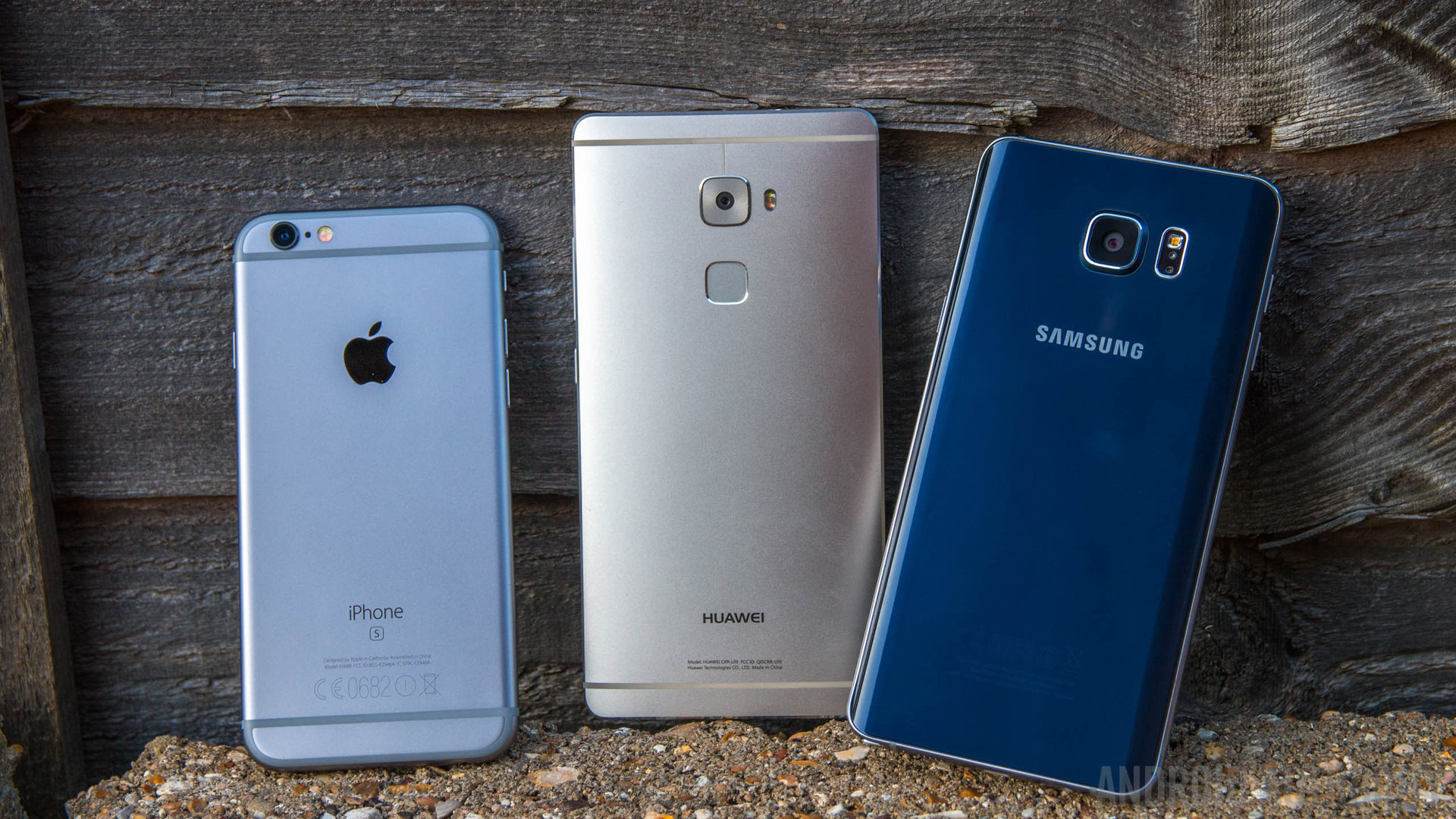
Quite likely due to accidental presses of the fingerprint sensor, I’ve often found that the Xperia Z5 also awakes itself when it’s in a pocket, resulting in several vibrations and the inevitable message to try entering your pin again. This is definitely not ideal and the handset also seems to wake itself in the pocket even without fingerprint security enabled. The power button is clearly rather sensitive and while this has its positives with regards to the sensor, it certainly also has negatives.
Overall, the Sony Xperia Z5 definitely offers performance that rivals other flagship devices and a combination of optimised software along with premium internals means the performance lives up to the price tag. Unless you’re running lots of games in the background, you probably won’t run into any performance issues.
Does it overheat?
Now to the question that many people have about any Snapdragon 810 powered smartphone; does it overheat. This is a rather subjective topic but based on some informal testing, it’s safe to say that it does overheat.
During every day tasks, the handset temperature doesn’t rise by much and certainly doesn’t feel like its overheating but power up the 4K video recording and the temperature starts to increase. Just like the Xperia Z3+, when you power up the camera, you’re greeted with the following warning:
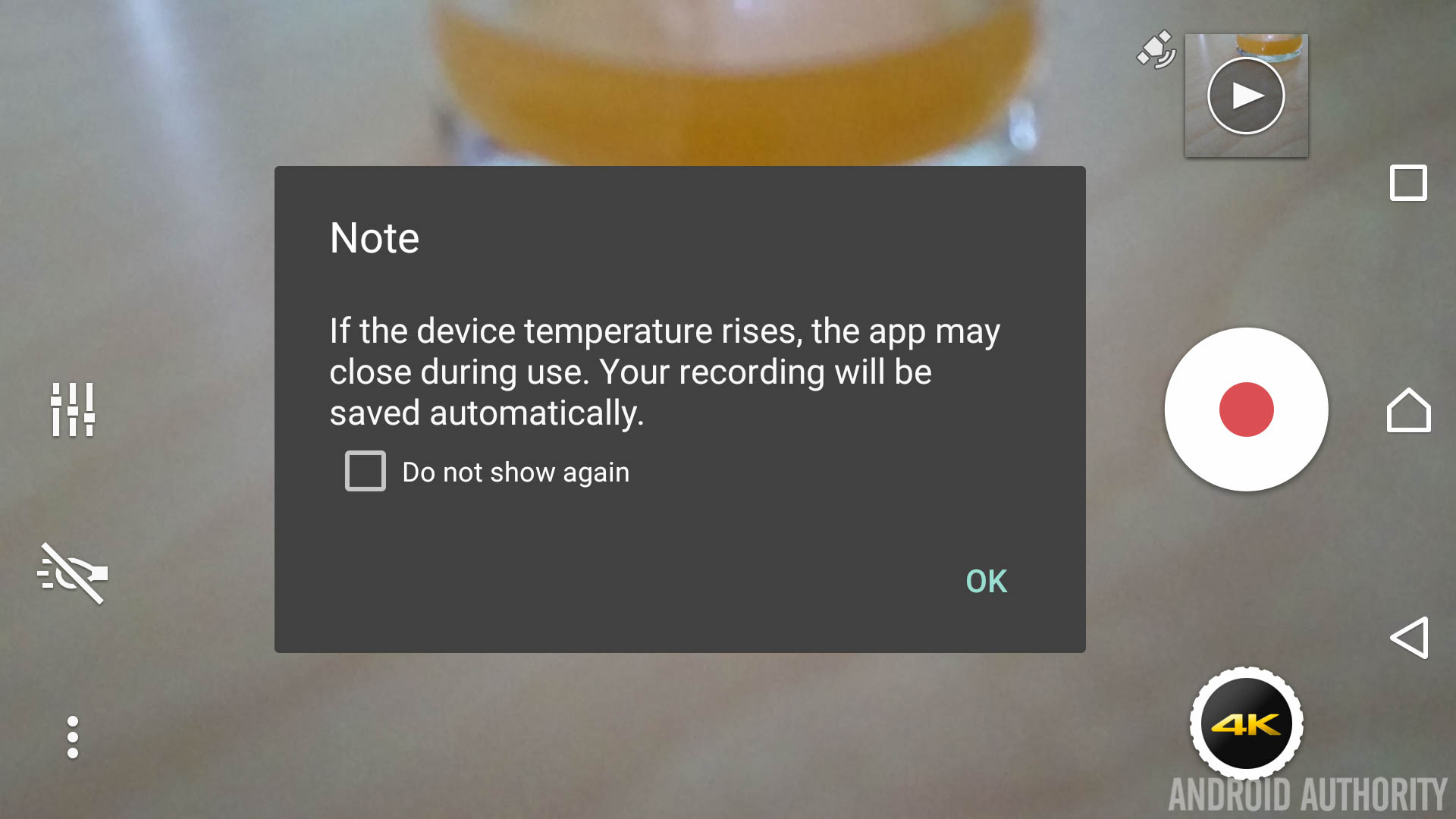
And sure enough, it does overheat. After 14 minutes and 30 seconds of recording a 4K video, the handset overheated to the point that it shut the camera down. Personally, I found that when the handset did overheat due to the camera, it became quite hot and in a cold climate like London during the fall season, it’s definitely warm enough to add to your own body heat. For those wondering, a 15 minute 4k video takes up 5.8GB which means the 32GB internal storage should be good enough for around 1 hour’s worth of 4k video.
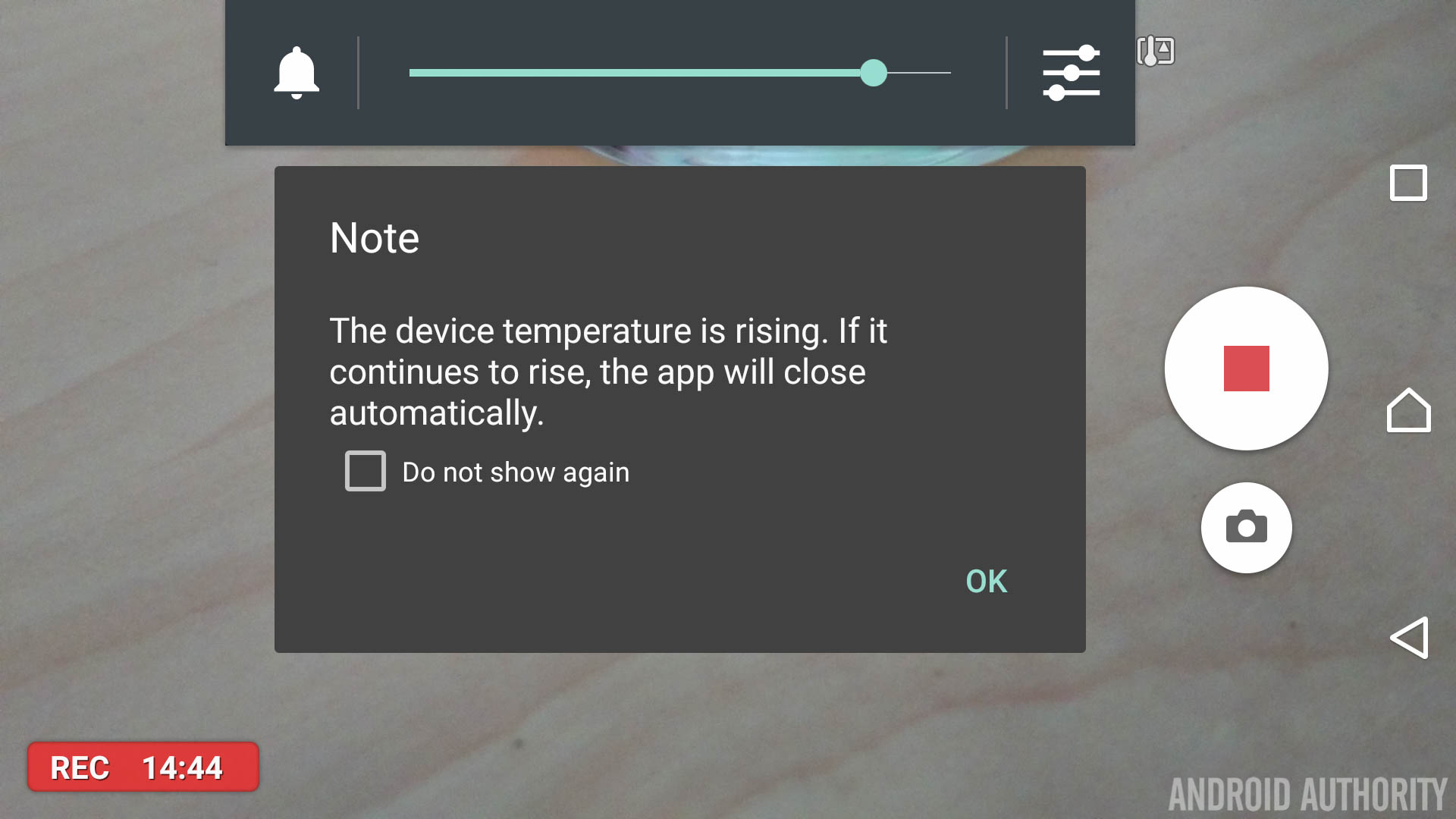
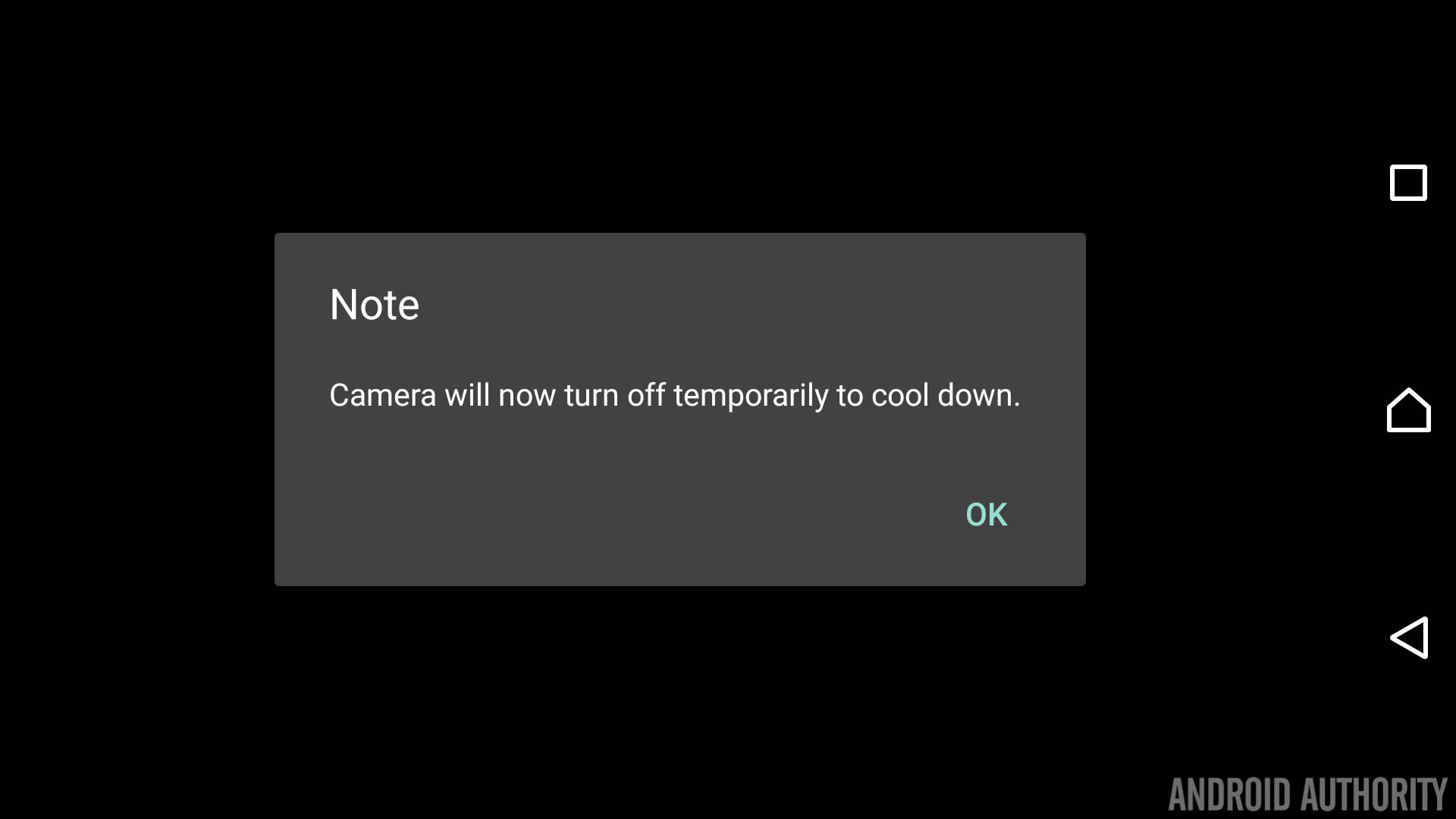
To test the overheating a step further, our very own Gary did some testing of the Z5 Compact camera for the review and found the temperature raised by 20 degrees Celsius when recording 4K video. Yes, the Xperia Z5 does overheat but it’s worth keeping in mind that some others handsets do overheat as well, and the updated Snapdragon 810 v2.1 definitely improves the experience compared to the Xperia Z3+, where the handset would shut down almost immediately.
It’s safe to say that Sony and Qualcomm have definitely improved the experience and no doubt, this is due to Sony’s decision to use dual heating pipes to dissipate heat away from the processor. Without doubt, this definitely serves its purposes and aside from when using the camera, the Xperia Z5 doesn’t seem to overheat more than any other handset. In fact, 15 minutes of 4k video recording is more than a lot of other flagship devices so you definitely won’t have any issues here.
Battery Life
Under the unibody build, the Xperia Z5 has a 2900mAh non-removable battery and during the past couple of weeks, the handset has delivered interesting battery life. The battery size is on par with most current flagships and the handset will last a day under most conditions. We say most, as there are certain tasks that will hamper the battery life massively.
One of these is a big issue for me, as I use my phone as a navigation device and when using the Xperia Z5 and Google Maps, the battery drained by 20 percent with just under an hour’s screen on time. Extrapolating this further, a three-and-a-half-hour journey resulted in a 65 percent drain in the battery and while some of this was due to the screen, the navigation does seem to drain the battery more than on other devices that I’ve used.
Aside from this, battery life is on par with other devices, with the Xperia Z5 lasting about 18 to 22 hours on a single charge with around 3 hours’ screen on time. Where the Xperia Z5 does do well however, is its standby time with the handset lasting two days without Sony’s stamina mode. Turn on STAMINA and this can push the standby time past four days and this is definitely impressive as it means you can take the handset away for a weekend, safe in the knowledge it won’t run flat halfway through your trip.
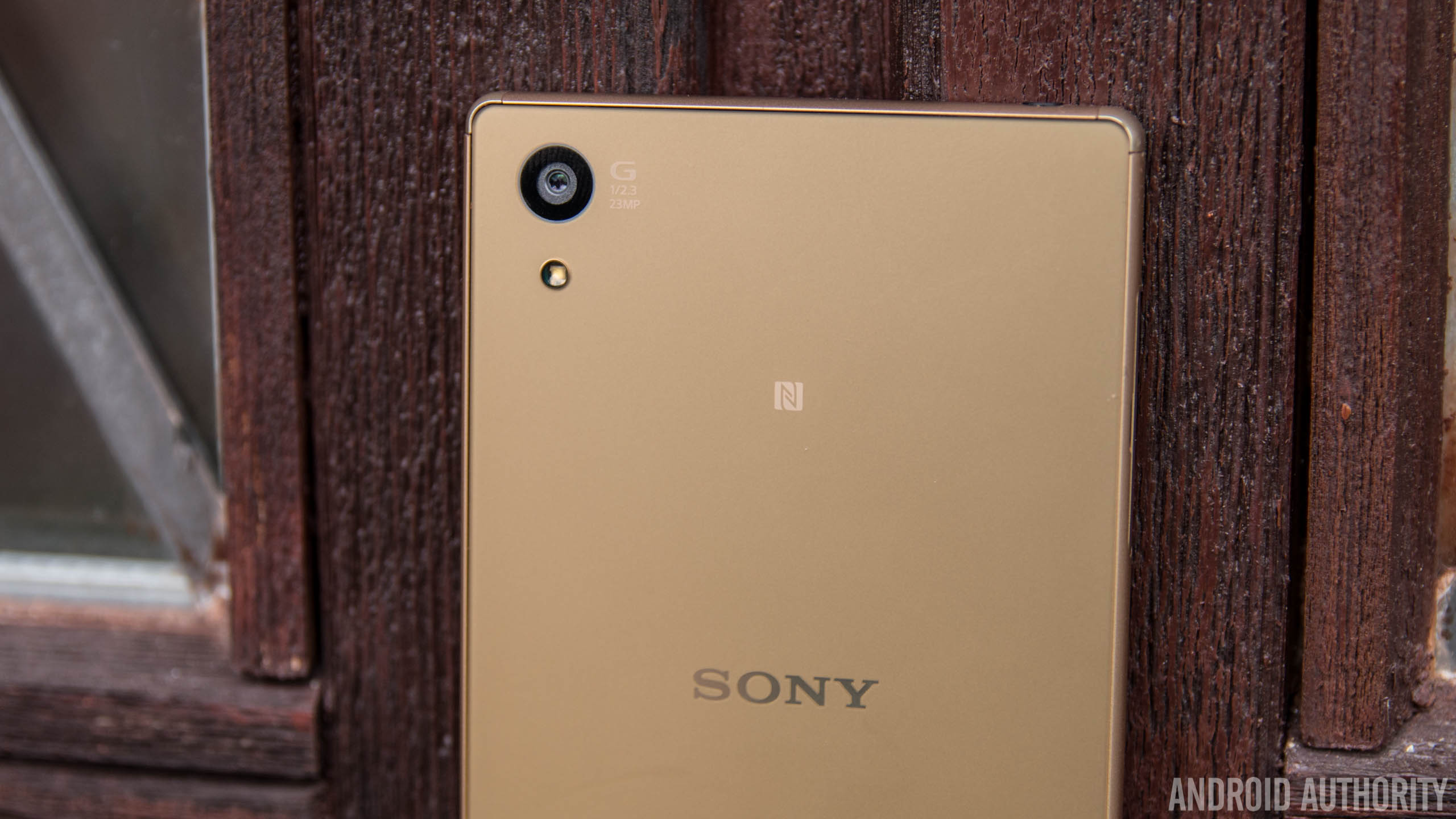
Camera
One of the big changes in the Xperia Z5 is the camera, with Sony’s latest flagship featuring the first major upgrade to the Xperia camera since the original Xperia Z1. The latest camera brings a 23MP Exmor-RS lens with effective image stabilisation and a hybrid phase detection autofocus system that Sony claims is the fastest on the market.
In actual use, the focus time doesn’t disappoint, with the handset quick to focus even in low light conditions. Unfortunately, this doesn’t quite make up for the less than stellar camera performance in low light. In good light, images are crisp, clear and detailed but as the light reduces, so does the camera quality and while it does come with SteadyShot, this only applies to videos and not low light images where OIS would have been a really welcome addition.
We’ve already put the Xperia Z5 camera up in a shootout against the Galaxy Note 5, iPhone 6S and LG G4 to test just how good Sony’s latest imaging sensor is and you can see this shootout here. We’ll be revealing which device took each image and talking through the cameras in more detail early next week and we’ll go more in-depth on the camera in the full Xperia Z5 review!
Wrap Up
There you have it – my impressions of the Xperia Z5 having spent a couple of weeks with Sony’s latest smartphone. The handset certainly isn’t perfect but with features like IP68 water and dust resistance, it definitely has a few unique points that set it apart from the competition. In fact, the Xperia Z5 is arguably one of Sony’s best ever handsets and while it is an acquired taste, Sony has definitely produced a handset that will be popular with many people.
That being said, some of Sony’s improvements definitely don’t seem to stand up to as close scrutiny as you might have hoped and with the camera especially, I think there’s still further testing to do to see whether it lives up to Sony’s claims that it is the best smartphone camera on the market.
Naturally, we’ll have a full in-depth review of the Xperia Z5 coming up shortly, with this piece focusing more on the design, performance and stability of Sony’s latest smartphone. Unlike previous years, the handset is certainly interesting and with the Z5 Premium and the Z5 Compact also on the market, Sony might yet gain more traction than it has done in previous years.
What do you think of the Xperia Z5? Is there anything you’d like us to test in the full review? Let us know your views in the comments below guys!